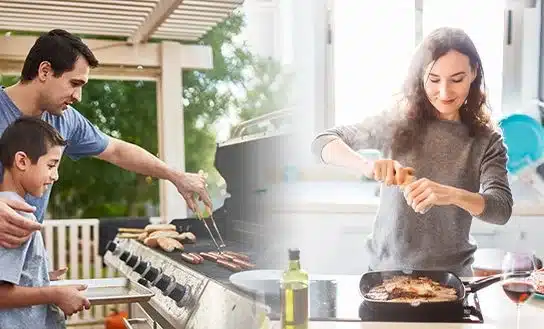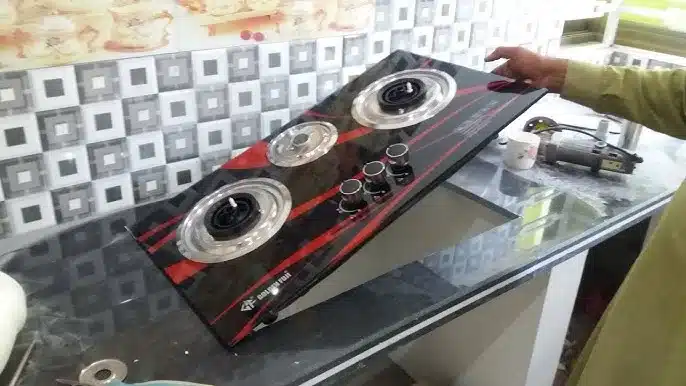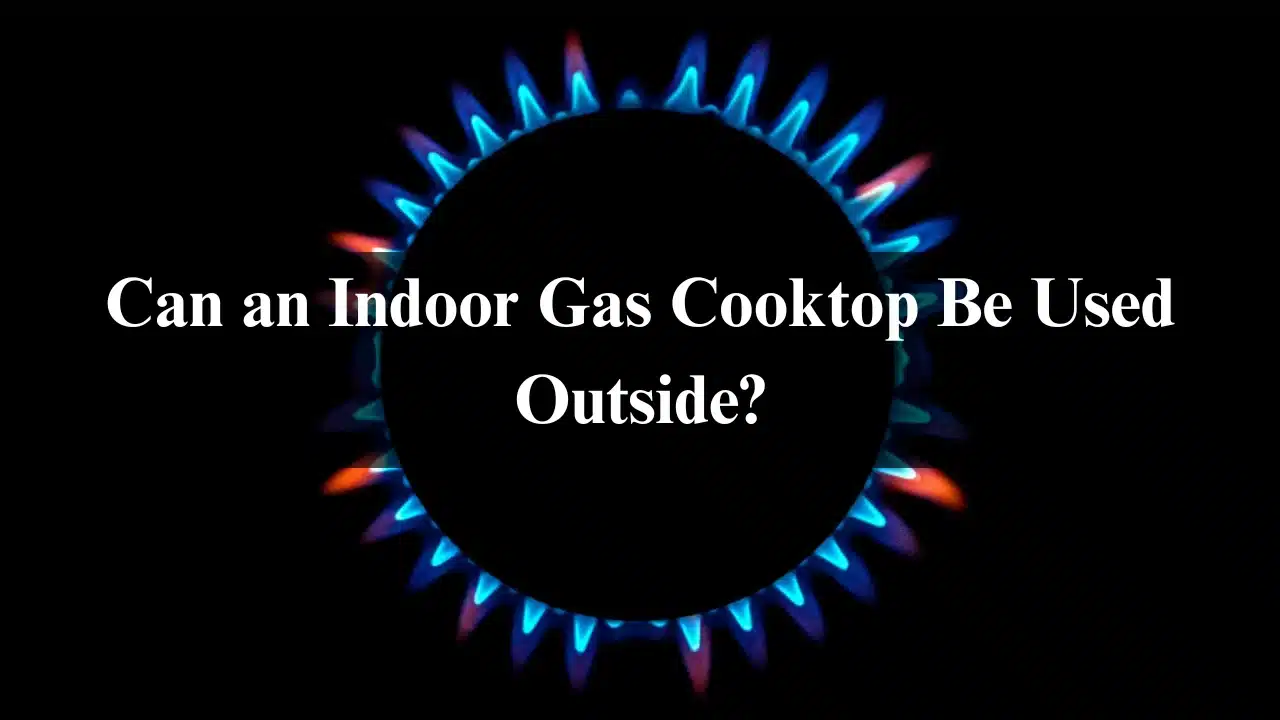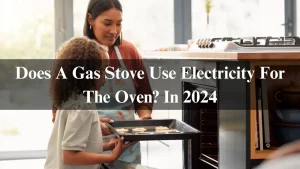Outdoor cooking has become a staple for barbecues, family gatherings, and casual get-togethers. While outdoor grills and cooktops are specifically designed for these purposes, many homeowners wonder if their indoor gas cooktops can also function outside. Although this may seem convenient, several important factors affect whether this is practical or safe.
Table of Contents
7 Key Differences Between Indoor and Outdoor Gas Cooktops
While indoor and outdoor gas cooktops serve the same purpose—cooking food—they are designed differently to suit specific environments. Here are the key differences:

Design and Construction
Indoor gas cooktops are typically made from more delicate materials like glass or ceramic, while outdoor models are constructed from sturdier materials like stainless steel or cast iron. The latter can withstand harsh weather conditions and potential damage from outdoor elements.
Ventilation Requirements
Indoor gas cooktops require proper ventilation to remove harmful fumes emitted during cooking. In contrast, outdoor models do not have this requirement, as the open air can easily dissipate the fumes.
Heat Output
Outdoor gas cooktops generally have higher heat output than indoor ones, as they are designed for larger spaces and to be used in open-air environments where heat loss is more likely.
Ignition System
Most indoor units feature electronic spark ignition systems that can be triggered easily, while some outdoor units use pilot lights that require manual lighting.
Fuel Source
Indoor cooktops usually run on natural gas or propane, supplied through a fixed line or a refillable cylinder—most outdoor models primarily run on portable propane tanks.
Safety Features
Indoor units often come equipped with flame failure devices that automatically shut off the gas supply if the flame is extinguished. In contrast, outdoor models may not have such features, as it is less likely to happen in an open-air environment.
Why People Consider Using Indoor Cooktops Outside?
There are several reasons why someone might want to use an indoor cooktop outdoors:
- Temporary Setup: People may prefer using available equipment rather than investing in new outdoor appliances for a one-time event.
- Space Constraints: An indoor cooktop is viable in smaller outdoor areas.
- Cost: The high price of outdoor cooktops can deter some individuals from purchasing dedicated models, prompting them to repurpose their indoor units.

Is Using an Indoor Gas Stove Safe in a Covered Outdoor Area?
Using an indoor gas stove in a covered outdoor area raises several safety concerns:
Ventilation Issues
Indoor gas stoves are designed for well-ventilated spaces. When used in covered outdoor areas, ventilation may not be sufficient, leading to carbon monoxide buildup—a serious health risk.
Impact of Outdoor Conditions
Wind can disrupt the flames, causing uneven heating or even extinguishing them completely. Rain can damage delicate stove components if they are not built for outdoor use.
Fire Risks
Gas stoves produce open flames that can easily ignite surrounding objects or flammable materials. The increased presence of combustible materials in outdoor settings elevates the risk of fire accidents.
Lack of Safety Features
Indoor gas stoves may lack safety features designed for outdoor use, such as temperature controls to prevent overheating or automatic shut-offs.
Warranty Concerns
Using an indoor gas stove outdoors can void the manufacturer’s warranty, as it operates outside its intended environment.
What Modifications Are Necessary for Outdoor Use?
If you still consider using an indoor gas cooktop outdoors, certain modifications are essential for safety and efficiency:

- Proper Ventilation: To ensure adequate airflow around the stove, place it in a well-ventilated area, such as an open patio.
- Protection from Elements: Use a cover or set up a canopy to protect the cooktop from rain and wind.
- Stable Footing: Invest in a sturdy stand or platform to ensure the cooktop’s stability on uneven outdoor terrain.
- Gas Supply Considerations: Use flexible hoses with quick-connect fittings for easy disconnection and transport.
- Regular Maintenance: Clean and check the cooktop regularly, including checking for gas leaks and replacing worn or damaged parts.
How to Maintain Safety and Efficiency?
To ensure safety and efficiency while using an indoor gas cooktop outdoors, follow these precautions:
- Check Ventilation: Ensure fresh air circulates around the cooking area by keeping windows or doors open.
- Keep Flammable Materials Away: Store flammable items safely from the cooking area.
- Regular Leak Checks: Inspect all connections and hoses for gas leaks before each use. If you suspect a leak, turn off the gas and seek professional help.
- Use Stable Surfaces: Ensure the cooktop is placed on a stable surface to prevent tipping.
- Clean Regularly: Regular cleaning reduces the fire risk from food particles or grease buildup.
- Have a Fire Extinguisher Nearby: Always keep a fire extinguisher handy in emergencies.
- Follow Manufacturer Instructions: Adhere to guidelines for your specific gas cooktop model.
Key Risks of Using an Indoor Gas Cooktop Outdoors
Using an indoor gas cooktop poses several significant risks:
- Fire Hazard: The exposure of electrical components to moisture can lead to short circuits or gas leaks, causing fires.
- Gas Leaks: Indoor gas hoses and connections may not withstand outdoor conditions safely.
- Injury: Without proper installation, unstable surfaces can cause the cooktop to tip over, leading to burns or other injuries.
Performance Issues When Using Indoor Cooktops Outdoors
Indoor gas cooktops may not perform efficiently outdoors due to various factors:
- Inconsistent Heating: Wind and temperature fluctuations can disrupt the cooktop’s ability to maintain a steady flame.
- Increased Fuel Consumption: More fuel may be required to compensate for heat loss in windy or cold conditions.
Does a Gas Cooktop Need to Be Vented Outside?
In general, gas cooktops designed for indoor use require proper outside venting. This helps eliminate harmful fumes produced during cooking, ensuring a safer environment for users.
Related Articles:
Gas Range vs. Cooktop: Which One Should You Choose? 2024
Troubleshooting 5 Common Gas Cooktop Issues Latest Info 2024
Conclusion
While using an indoor gas cooktop outdoors may seem convenient, the associated safety concerns, performance issues, and potential for damage make it a less viable option. Investing in a dedicated outdoor gas cooktop is the best way to ensure safety, efficiency, and longevity. By understanding the differences between indoor and outdoor gas cooktops and recognizing the potential risks, you can make informed decisions about your cooking equipment.
FAQs
Can an indoor gas stove be used outdoors if it’s covered?
It requires proper ventilation and weather protection to ensure safety and performance.
What are the risks of using an indoor gas stove outside?
The main risks include exposure to elements, potential for gas leaks, and inadequate ventilation, which could lead to harmful gas buildup.
How can I ensure my indoor gas stove is safe for outdoor use?
Ensure it is properly ventilated, protected from the weather, and regularly inspected for safety and performance.
Are there specific models of indoor gas stoves better suited for outdoor use?
Most indoor gas stoves are not designed for outdoor use. However, some models with better weather resistance and ventilation options might be more suitable. Consult with a professional for recommendations.




